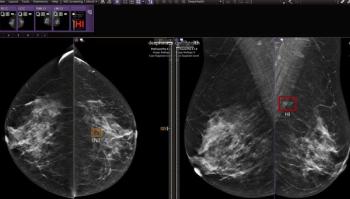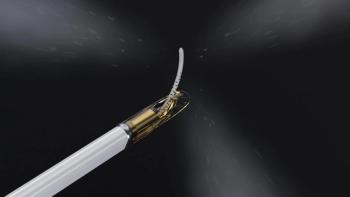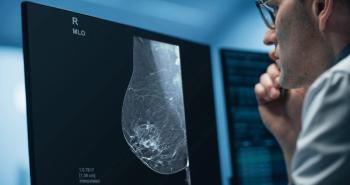
Ultrasound-detected cancers elude CAD
Researchers from Seoul National University Medical Center have found that breast cancers detected by ultrasound only are not very sensitive to computer-aided detection.
Researchers from Seoul National University Medical Center have found that breast cancers detected by ultrasound only are not very sensitive to computer-aided detection.
Dr. Sang Kyu Yang and colleagues applied CAD (ImageChecker, R2 Technologies) to 96 bilateral mammograms obtained on a full-field digital system. The patient population consisted of 26 women with 29 ultrasound-detected cancers that had all appeared normal on mammography and 70 women with 70 mammography-detected cancers. All in the latter group had negative findings at clinical exam.
The researchers scored a lesion as a true positive if the CAD system marked the correct lesion type (microcalcifications or mass) in at least one of two views. All CAD marks that were not located on the suspicious lesion were scored as false positives. They presented their findings in a poster at the 2005 RSNA meeting.
In the ultrasound-detected group, there were 17 marks on masses and five on calcifications - correctly identifying six masses. The false-positive rate was 0.15 per image and 0.62 per case.
In the mammography group, the CAD system scored 116 marks on masses and 185 on calcifications, resulting in 58 and 139 true positives, respectively. The false-positive rate was 0.37 per image and 1.48 per case.
The sensitivity of CAD according to the radiologic primary features in the 29 ultrasound-detected cancers was 17.2%, broken down as follows:
- 0%: microcalcifications (0/0)
- 17.8%: masses (5/28)
- 0%: masses with microcalcifications (0/1)
The sensitivity of CAD according to the radiologic primary features in the 70 mammography-detected cancers was 95.7%, broken down as follows:
- 100%: microcalcifications (29/29)
- 86.9%: masses (20/23)
- 100%: masses with microcalcifications (18/18)
The mean tumor size of ultrasound- and mammography-detected cancers was 1 cm and 1.8 cm, respectively. Dense breasts were more common in the ultrasound-detected group (73%) than in the mammography-detected group (63%), though the difference was not statistically significant.
The researchers consided the information useful when applying CAD to screening mammography and adjunct ultrasound to detect early breast cancers.
For more information from the Diagnostic Imaging archives:
Newsletter
Stay at the forefront of radiology with the Diagnostic Imaging newsletter, delivering the latest news, clinical insights, and imaging advancements for today’s radiologists.




























